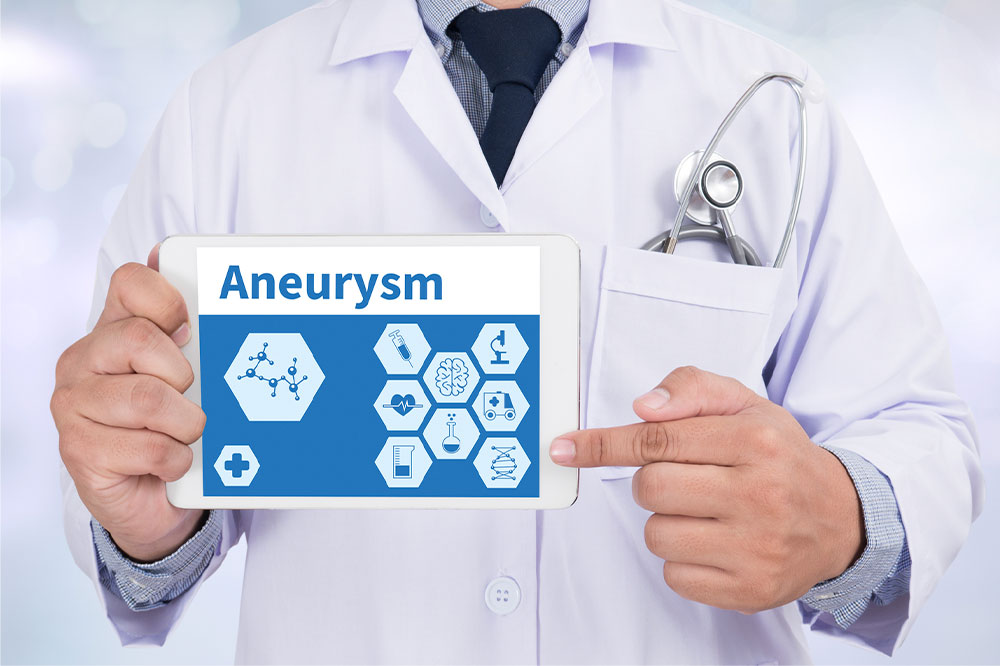
Aneurysm – Types, symptoms, and management
Aneurysm is a potentially fatal disorder marked by a weak and bulging area in the wall of a blood artery. If left untreated, it can rupture, resulting in severe bleeding. In extreme cases, it can cause death. Aneurysms can occur in any blood vessel but are usually found in arteries rather than veins. It is important to understand the types of this disorder, its symptoms, and methods of early detection and treatment.
Types of aneurysms
Aneurysms can form in various locations throughout the body, but the most common is in the brain and the aorta. The two common forms are cerebral aneurysms and aortic aneurysms. The details regarding these are given below.
Cerebral aneurysm
Cerebral aneurysms develop in the blood arteries that supply blood to the brain. They are classified into two main types, namely, saccular and fusiform. Saccular aneurysms are the most common, characterized by a small sac-like bulge forming on a weakened blood vessel area. On the other hand, fusiform aneurysms involve the entire circumference of the vessel, resulting in a more diffuse dilation.
Aortic aneurysm
Aortic aneurysms develop in the aorta, the body’s major blood conduit that transports oxygenated blood from the heart to the rest of the body. The most common are abdominal aortic aneurysms (AAA) and thoracic aortic aneurysms (TAA). AAA occurs in the abdomen, while TAA affects the chest area.
Symptoms of aneurysms
Aneurysms often do not cause symptoms until they rupture or become large enough to exert pressure on surrounding tissues or organs. However, depending on the location and size, aneurysm symptoms can vary.
Cerebral aneurysm symptoms
Sudden and severe headache
Blurred or double vision
Neck pain or stiffness
Nausea and vomiting
Sensitivity to light
Seizures or loss of consciousness in adverse cases
Aortic aneurysm symptoms
Deep, constant pain in the chest or abdomen
Back pain
Difficulty breathing or swallowing
Hoarseness
Rapid heartbeat
Low blood pressure
Significance of early diagnosis and treatment
Early diagnosis and treatment of an aneurysm are crucial to prevent rupture and its potentially devastating consequences. An aneurysm rupture can cause internal bleeding, leading to stroke, organ damage, or even death. Timely intervention is likely to trigger a positive outcome.
Diagnosis
The significance of aneurysm imaging tests like magnetic resonance imaging (MRI), computed tomography (CT) scans, and angiography can’t be underestimated. Individuals at increased risk, such as those with a family history of aneurysms or certain medical conditions, may benefit from regular examinations.
Treatment
The recommended treatment for an aneurysm is determined by its size, location, and the patient’s overall health. Treatment options include:
Observation
Small, stable aneurysms may be monitored regularly without immediate intervention.
Prescription treatments
Some prescription treatments can help lower blood pressure and reduce the risk of rupture.
Endovascular repair
This minimally invasive procedure involves inserting a stent or coiling the aneurysm to reinforce the weakened blood vessel.
Surgical repair
In some cases, open surgery may be necessary to remove the aneurysm and repair the blood vessel.
Aneurysms pose a serious threat to health and should not be underestimated. Understanding the types of aneurysms, recognizing their symptoms, and seeking early medical attention is essential. This will help to prevent rupture and its potentially catastrophic consequences. Regular check-ups and a healthy lifestyle can also help to lower the chance of having an aneurysm. Remember that awareness and speedy action can make a difference in maintaining one’s well-being.




